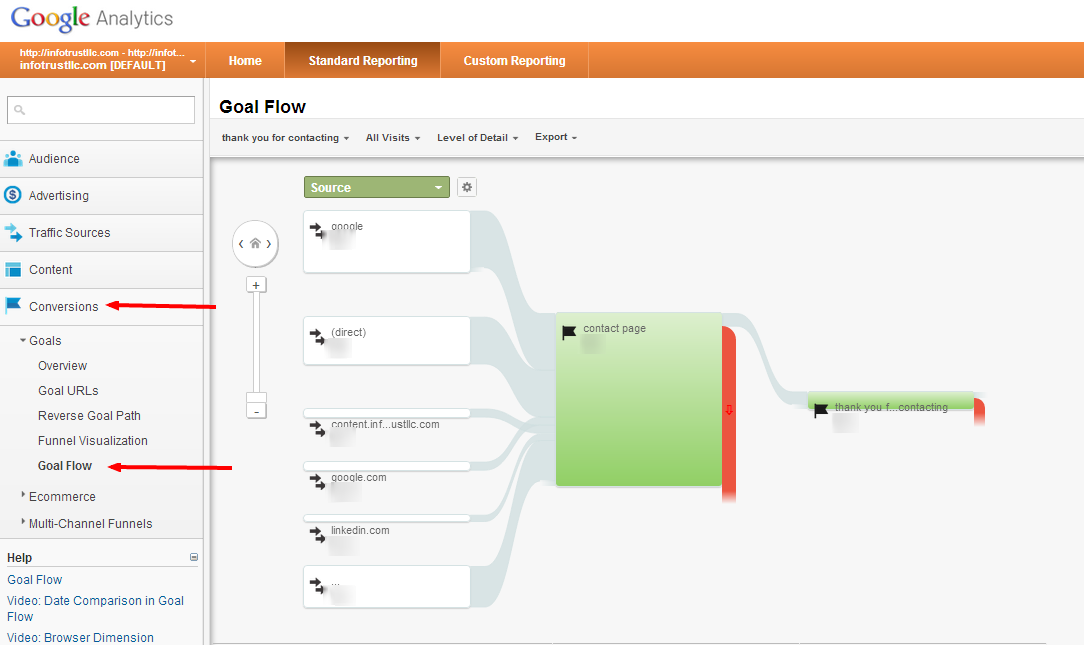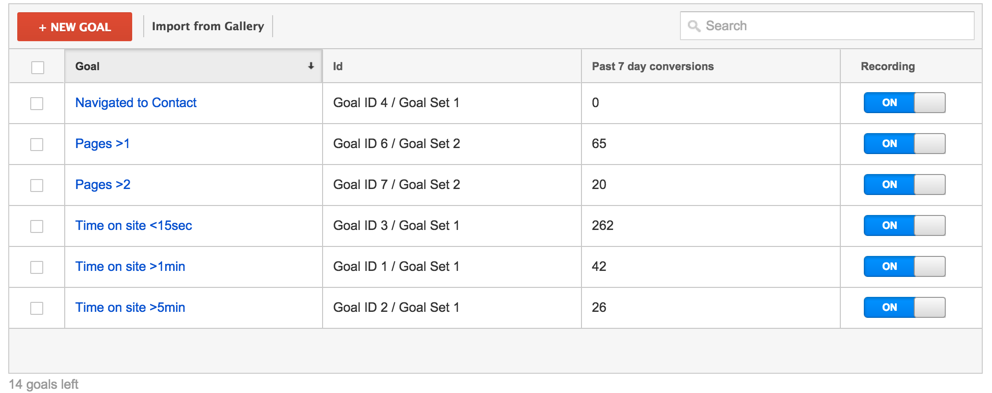What Data Is Google Analytics Goals Unable to Track: Find Out the Limitations
What Data Is Google Analytics Goals Unable to Track: Find Out the Limitations
Blog Article
Discover the Limitations of Google Analytics Goals: Unveiling the Data Types That Remain Untrackable
As organizations progressively count on data-driven decision-making, recognizing the restrictions of devices like Google Analytics ends up being paramount. While Google Analytics Goals offer valuable understandings into individual interactions, there exist data types that avoid tracking, posing obstacles to a detailed understanding of customer habits. These untrackable data types elevate questions about the accuracy and efficiency of the analytics information that companies greatly rely upon for their electronic strategies. Interested to reveal the hidden blind places in your data analysis procedure?
Incomplete User Journey Tracking
Insufficient user trip tracking within Google Analytics can prevent the capability to properly analyze user habits. When the user journey is not completely tracked, there are spaces in the information that prevent a detailed understanding of just how users interact with a site. This lack of understanding can lead to missed possibilities for optimization and improvements to the individual experience.
One common issue with incomplete user journey monitoring is the lack of ability to see the complete course that customers take previously finishing an objective or leaving the website. Without this details, it is challenging to determine where individuals may be encountering barriers or rubbing factors that avoid them from converting. In addition, insufficient tracking can cover the impact of particular marketing efforts or website changes on individual behavior.
To resolve this restriction, it is important to establish up correct monitoring mechanisms within Google Analytics to catch the whole customer trip. This might involve setting up occasion tracking, objective funnels, or using devices like Google Tag Manager to make sure that no essential interactions go unrecorded. By acquiring a comprehensive sight of the individual trip, internet site owners can make more educated decisions to enhance user involvement and drive conversions.
Acknowledgment Challenges
Navigating through acknowledgment obstacles in Google Analytics requires a detailed understanding of how different touchpoints contribute to the overall conversion process. Attribution obstacles arise from the complexity of contemporary client journeys, where individuals connect with multiple channels before converting.
One common attribution difficulty is the difficulty in connecting conversions to the right resource, particularly in instances where individuals engage with multiple channels prior to transforming. In addition, cross-device tracking postures another acknowledgment challenge, as customers often change between tools throughout their trip, making it challenging to track their communications perfectly.
Offline Conversions
Given the obstacles connected with attributing conversions precisely in online networks, the dimension of offline conversions offers a significant possibility for marketing experts looking for a more thorough understanding of their clients' journey. Offline conversions describe activities that consumers absorb the real world, such as making purchases in brick-and-mortar shops or over the phone, participating in events, or engaging with published products - what data is google analytics goals unable to track. These conversions are critical for services that run both online and offline, as they provide beneficial insights right into the performance of marketing projects throughout various touchpoints
Tracking offline conversions generally posed a significant obstacle for online marketers, as it was testing to attach these activities back to specific on the important source internet interactions accurately. Nonetheless, with developments in modern technology, such as the combination of CRM systems, unique identifiers, and discount coupon codes, services can now connect the gap between online and offline data to get a more alternative sight of consumer actions. By efficiently determining offline conversions, marketing experts can maximize their methods, allot sources much more efficiently, and eventually enhance the overall consumer experience.
Cross-Device Monitoring
Cross-device monitoring plays a vital role in recognizing the interconnected nature of consumers' digital interactions across several devices. In today's omnichannel globe, where users perfectly switch over between smartphones, desktops, and tablet computers, tracking their actions throughout these gadgets is important for marketing experts to acquire a comprehensive sight of their consumer trip.

Moreover, personal privacy problems and regulations such as GDPR and CCPA have further complicated cross-device tracking. With individuals demanding more control over their information and boosted limitations on tracking modern technologies, marketing professionals must locate innovative and privacy-compliant methods to link user communications across devices.
Dynamic Content Interaction
Comprehending customer engagement with vibrant content is essential in enhancing electronic advertising approaches for enhanced target market communication. Dynamic content describes site components that alter based on individual habits, preferences, or other elements, offering an individualized experience. Nevertheless, tracking individual interactions with dynamic content postures obstacles for standard analytics devices like Google Analytics.
While Google Analytics can track standard interactions like clicks and page views, it might have a hard time to catch even more nuanced interactions within vibrant content. what data is google analytics goals unable to track. Metrics such as time invested in details dynamic elements, hover activities, or interactions within pop-ups are often not quickly quantifiable making use of common monitoring techniques. This limitation impedes marketing professionals' capacity to totally realize just how users are engaging with vibrant material and customize their techniques accordingly

Conclusion
In conclusion, Google Analytics objectives have constraints in tracking incomplete user journeys, associating conversions precisely, catching offline conversions, tracking cross-device communications, and measuring dynamic material involvement. These constraints highlight the value of discovering extra monitoring approaches and tools to get a more thorough understanding of user actions and conversions past what Google Analytics can supply.
While Google Analytics Goals deal beneficial understandings into user interactions, there exist information types that avoid monitoring, presenting difficulties to a detailed understanding of individual behavior.Incomplete user trip tracking within Google Analytics can hinder the ability to properly evaluate user behavior. When the individual journey is not totally tracked, there are voids in the information that protect against a comprehensive understanding of exactly how users interact with a website.One typical issue with incomplete user journey monitoring is the inability to see the full path that customers take before completing a goal or leaving the website. By gaining an extensive view of the customer trip, web site owners can make even more educated choices to boost user involvement and drive conversions.
Report this page